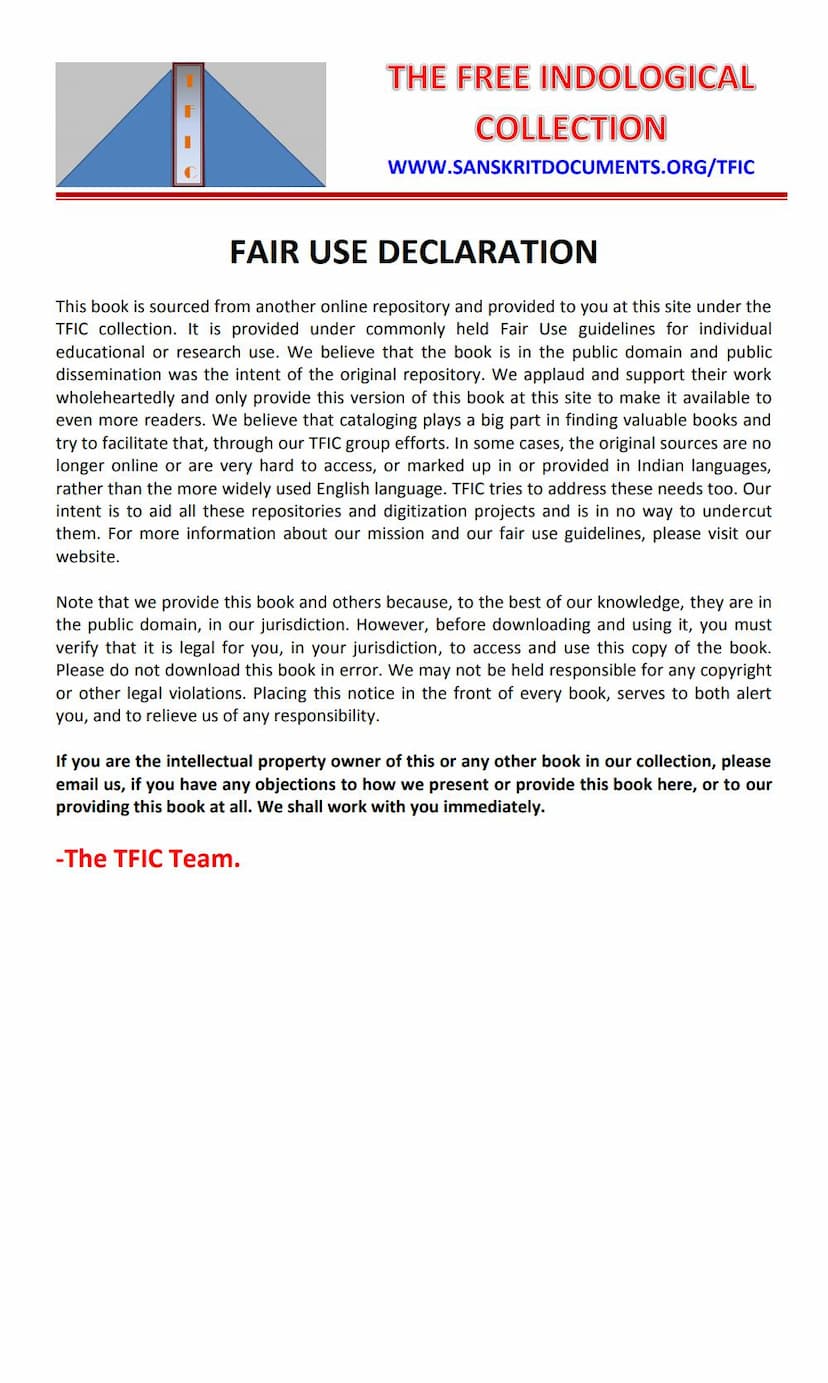Panini Sutra Vyakhya Purvarddha
Added to library: September 2, 2025

Summary
Here's a comprehensive summary of the Jain text "Panini Sutra Vyakhya Purvarddha" by T. Chandrashekharan, based on the provided pages:
Book Title: Panini Sutra Vyakhya (with Illustrations from Classical Works) Pūrvārdham
Author: Vīrarāghavācārya, Manalur
Editor: T. Chandrashekharan, M.A., L.T., Curator, Government Oriental Manuscripts Library, Madras
Publisher: T. Chandrashekharan (Madras Government Oriental Manuscripts Series No. 33)
Publication Year: 1954
Overall Purpose and Approach:
This work, "Pāṇini-Sūtra-Vyākhyā," is a commentary on Pāṇini's Sanskrit grammar sutras, compiled by Vīrarāghavācārya with the specific aim of making the study of grammar easy and interesting. Instead of relying on single words or abstract examples, the author provides illustrations by quoting passages from well-known classical Sanskrit literary works. This approach seeks to demonstrate the application of grammatical rules in context, thereby enhancing both understanding and engagement for students.
Key Features and Content:
- Follows Siddhānta Kaumudī: The commentary closely follows the order of the sutras as presented by Bhaṭṭoji Dīkṣita in his "Siddhānta Kaumudī."
- Scope: The "Pūrvārdha" (first part) of this work covers sutras from the "Stripratyaya-prakaraṇa" (section on feminine suffixes) up to the "Dvirukta-prakaraṇa" (section on reduplication).
- Omissions: The author has omitted sections on "Saṁjñā" (technical terms), "Sandhitraya" (three types of sandhi), and "Śabdādhikāra" (word-related rules). Some sutras are also omitted, likely due to not requiring illustrative examples.
- Illustrative Passages: A wide range of classical Sanskrit literature is used for illustrations, including:
- Bhaṭṭikāvya
- Śiśupālavadha
- Aghamarṣaṇarāghava (likely referring to Rāmāyaṇa or a similar work)
- Kirātārjunīya
- Naiṣadha (Naishadhīya-carita)
- Raghuvaṁśa
- Bhoja Campū
- Kumārasaṁbhava
- Campū-Bhārata
- Meghadūta
- Śrīmad Vālmīki Rāmāyaṇa
- Vīrguṇidarśa (possibly referring to a work on poetics or rhetoric)
- Uttararāmacarita
- Bhojacaritra
- Vallipariṇaya Campū
- Stotraratna of Yamunācārya
- Specific Identification: Care has been taken to identify the source of the illustrative verses and prose passages, providing exact references.
- Prose vs. Verse: Prose passages are indicated by a prefix "T," and their reference is linked to the immediately preceding verse number.
- Serial Numbering: Illustrations are serially numbered for easy reference. Repeated verses or passages are not reprinted but referenced by their number.
- Focus on Making Grammar Accessible: The introduction emphasizes the inherent greatness and precision of Sanskrit grammar, arguing against simplification. Instead, it advocates for making the study of grammar more accessible and engaging by using literary examples, thus allowing students to appreciate the literary value of the sutras.
- Manuscript Used: The press copy was prepared from a single manuscript written in Grantha script, bearing R. No. 4398-4, which exists in two volumes. A restored copy is also available.
- Editorial Process: The editor, T. Chandrashekharan, acknowledges the Sanskrit Pandits of the Government Oriental Manuscripts Library, Madras, for their diligent work in preparing the press copy and correcting proofs, highlighting the strain involved in reviewing three sets of proofs daily. The Rathnam Press is also thanked for its cooperation in timely printing.
Significance:
This work is presented as a valuable resource for Sanskrit students and scholars, aiming to bridge the gap between theoretical grammar and its practical application in classical literature. By grounding Pāṇini's rules in rich literary contexts, it seeks to foster a deeper appreciation for the language and its grammatical structure. The publication is part of the Madras Government Oriental Manuscripts Series, underscoring its importance in preserving and disseminating classical Indian knowledge.